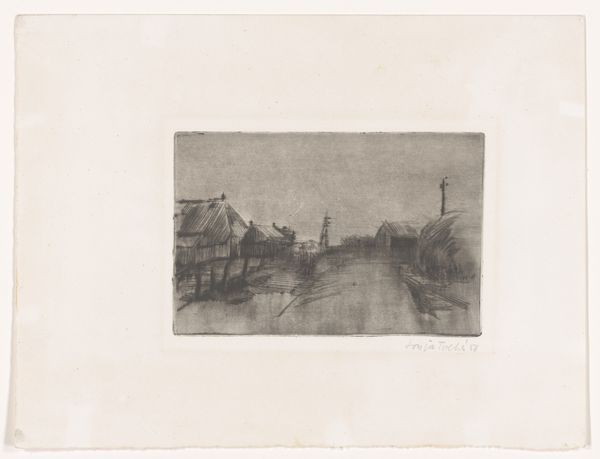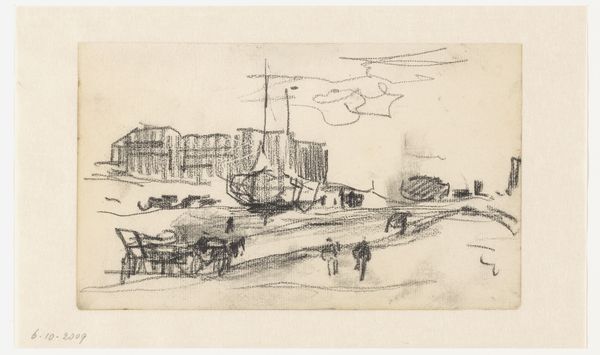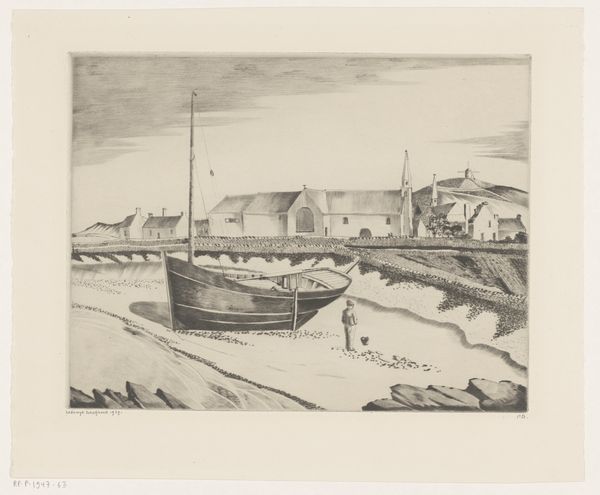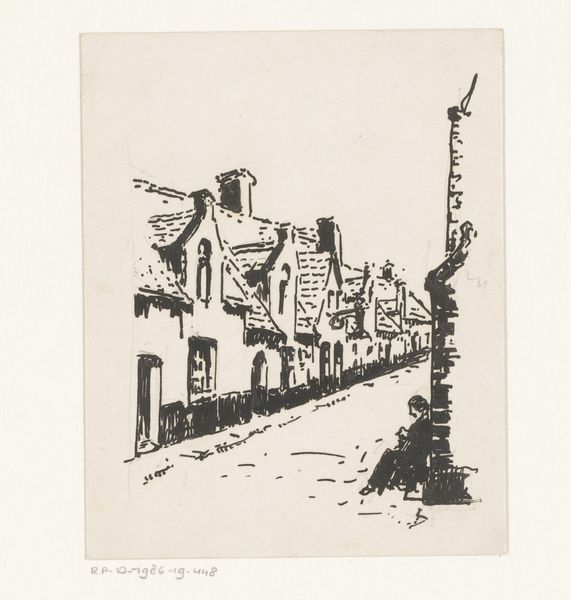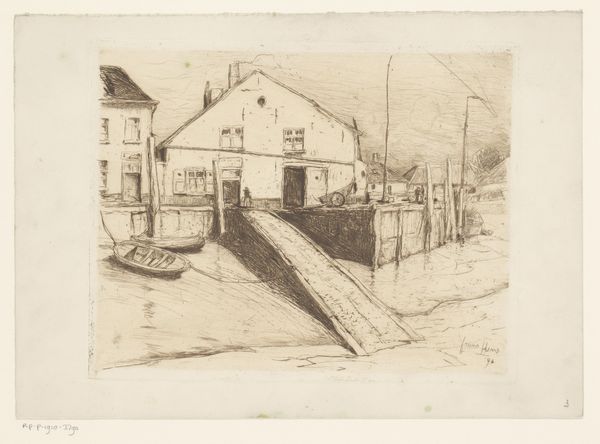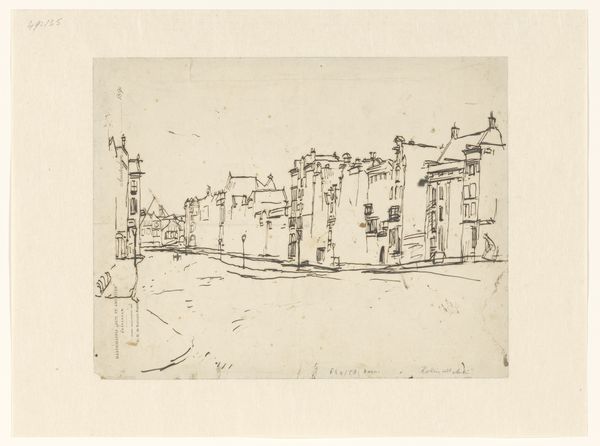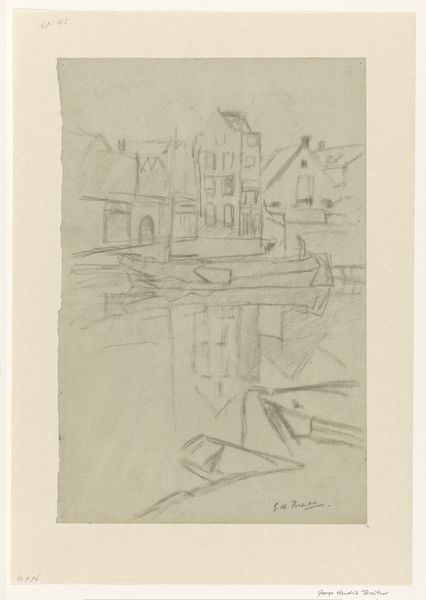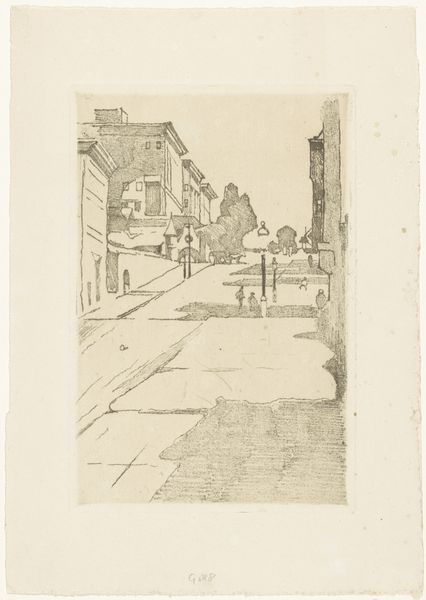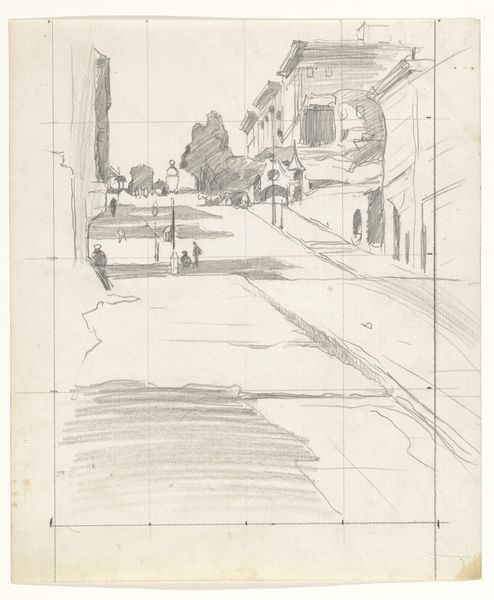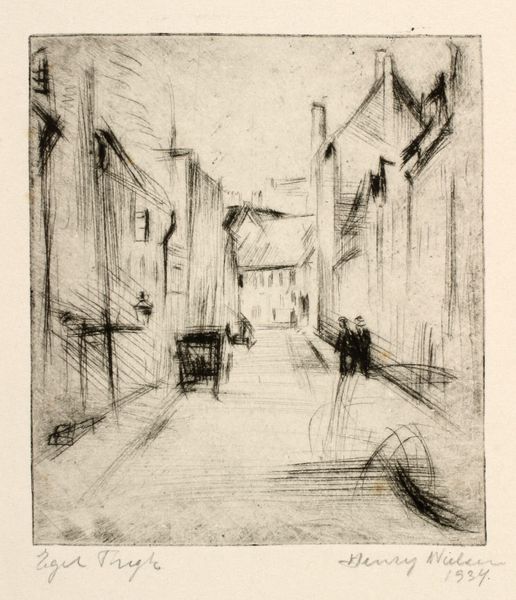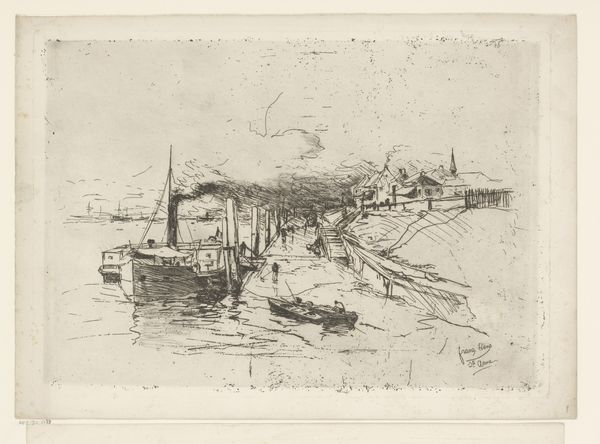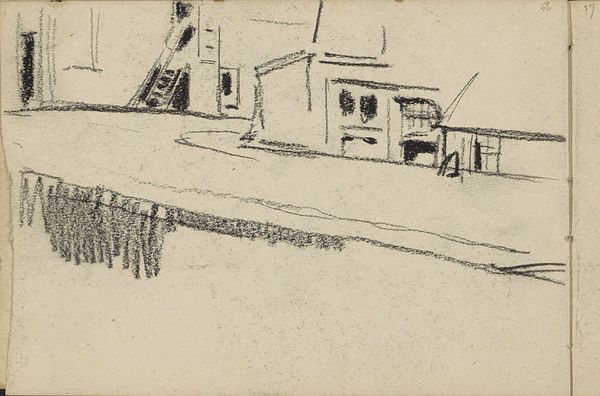
Dimensions: height 186 mm, width 240 mm
Copyright: Rijks Museum: Open Domain
Frans Hens etched "Dorpshuizen langs de kade" in 1896, capturing a serene quayside scene. The composition, dominated by the solid structure of village houses, evokes a sense of steadfastness and permanence. But consider the ramp leading from the water to the houses, it is a symbol of passage and transition. This motif resonates deeply with the classical imagery of the "Ladder of Divine Ascent," a symbol found in various religious and philosophical traditions. While Hens's ramp is more utilitarian, it shares a similar psychological space. Think of Jacob's Ladder, linking the earthly and divine realms, or the philosophical stairways leading to enlightenment. The act of ascent and descent, of moving between different states of being, speaks to the human yearning for progress and understanding. Whether it is a simple wooden ramp or an ornate, celestial staircase, the underlying human desire remains constant, a powerful force that engages us on a subconscious level. It is a progression, cyclical, ever resurfacing.
Comments
No comments
Be the first to comment and join the conversation on the ultimate creative platform.
